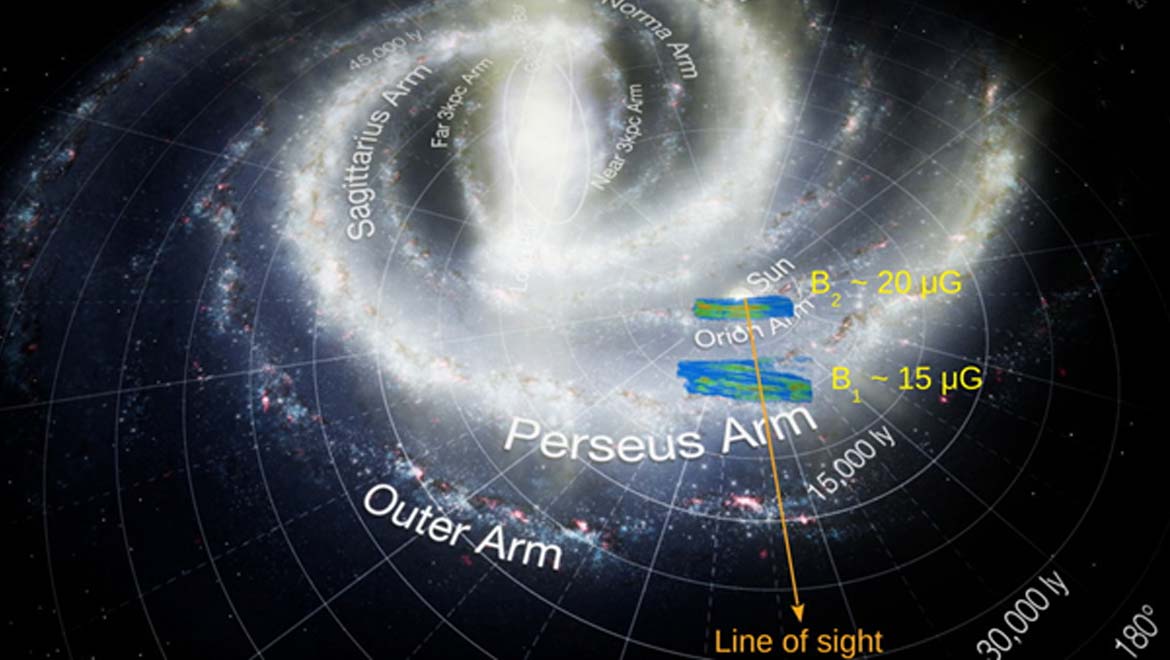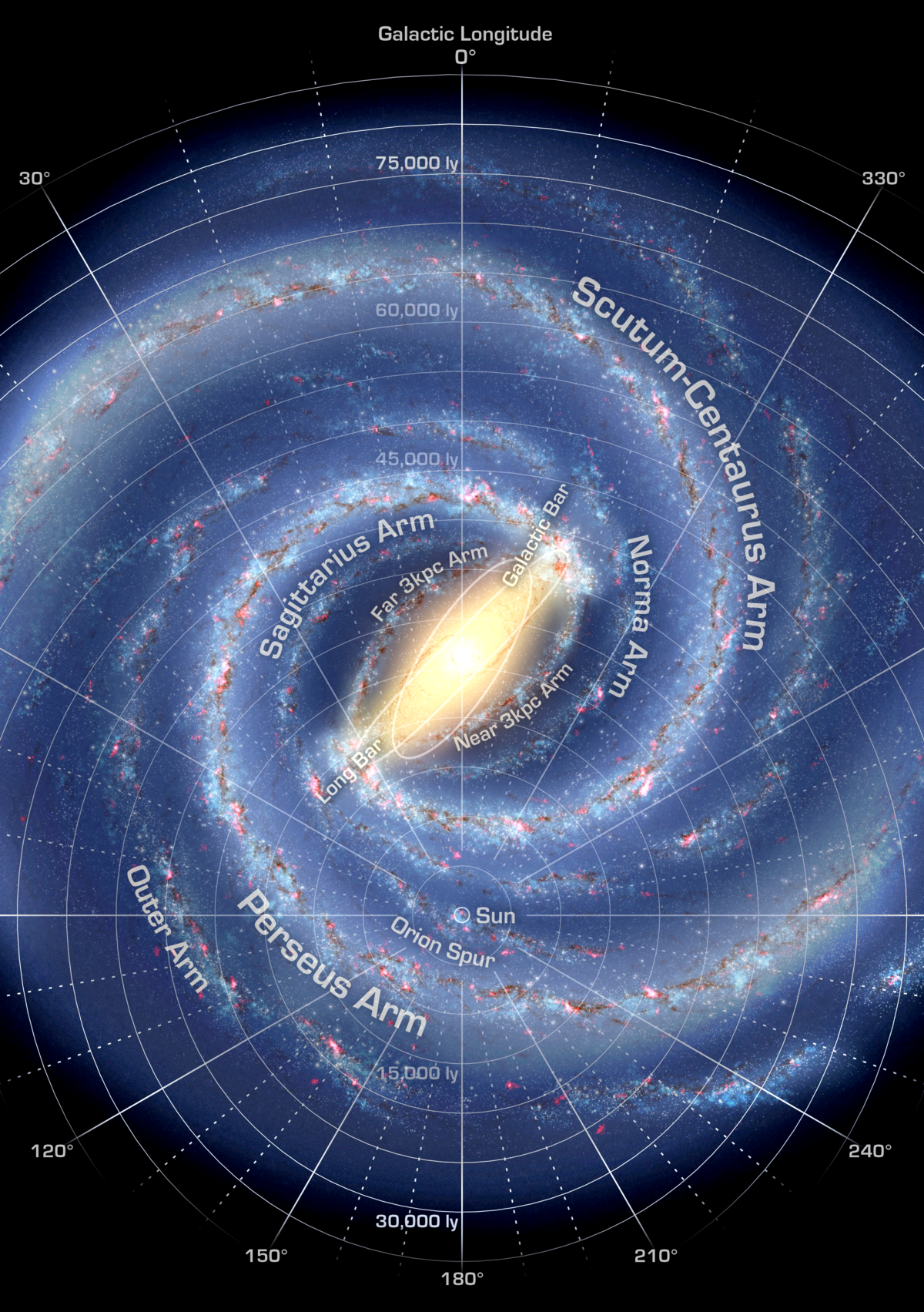1 day ago THE MILKY Way is not a flat disk as is often depicted in images of our home galaxy, but is rather akin to a Mexican Wave, according to the most detailed look at the warp of the Milky Way to date. The Milky Way has several smaller galaxies gravitationally bound to it, as part of the Milky Way subgroup, which is part of the local galaxy cluster, the Local Group. There are 59 small galaxies confirmed to be within 420 kiloparsecs (1.4 million light-years) of the Milky Way, but not all of them are necessarily in orbit, and some may themselves be in orbit of other satellite galaxies. The center of this galaxy lies about 82,000 light-years from the Milky Way’s center. The Canis Major Dwarf is even closer (42,000 light-years away) and equally disturbed. Eventually, our galaxy will consume these and many other satellites, growing the Milky Way while shrinking the number of its companions. The Milky Way is visible from Earth as a hazy band of white light, some 30° wide, arching the night sky. In night sky observing, although all the individual naked-eye stars in the entire sky are part of the Milky Way Galaxy, the term 'Milky Way' is limited to this band of light.
- Scientists have discovered the remains of an ancient “fossil galaxy” hiding inside of our own Milky Way.
- The galaxy is what’s left of a very old galaxy that collided with our own galaxy a long time ago, scientists think.
- The galaxy was identified by spotting old stars with different makeup deep within the Milky Way.


Understanding how galaxies are born, grow, and die is essential to better grasping how the universe itself works. As for our own Milky Way, we know quite a bit about it, but not nearly enough to say with certainty how it formed, and certainly not enough to know how long it took to grow to its current state.
Now, researchers using data from the Sloan Digital Sky Survey’s Apache Point Observatory Galactic Evolution Experiment (wow, that’s a mouthful) say they’ve uncovered the remains of an ancient “fossil galaxy” that may have contributed greatly to the growth of the Milky Way.
Black Friday 2020 is here
Milky Way Galaxy Activities
The fossil galaxy — which the scientists have nicknamed ‘Hercules’ — is actually quite substantial with regard to the overall size of the Milky Way. The researchers believe that it makes up “about one-third of the Milky Way’s spherical halo.” That’s a huge portion of our home galaxy, and nobody saw it previously because of how close to the center of the galaxy it is. The study was published in Monthly Notices of the Royal Astronomical Society.
“To find a fossil galaxy like this one, we had to look at the detailed chemical makeup and motions of tens of thousands of stars,” Ricardo Schiavon, co-author of the research, said in a statement. “That is especially hard to do for stars in the center of the Milky Way, because they are hidden from view by clouds of interstellar dust. APOGEE lets us pierce through that dust and see deeper into the heart of the Milky Way than ever before.”
By using APOGEE to study an incredible number of stars and then compare their makeup, the researchers were able to spot a very distinct difference between the vast majority of the stars and a collection of “a few hundred” that were very clearly different.

“Of the tens of thousands of stars we looked at, a few hundred had strikingly different chemical compositions and velocities,” Danny Horta, lead author, explained. “These stars are so different that they could only have come from another galaxy. By studying them in detail, we could trace out the precise location and history of this fossil galaxy.”
So how did this ancient galaxy become a part of our own? The scientists suggest that it’s possible the galaxy collided with our own Milky Way very early in its formation. When that happened, it would have bolstered the size of our galaxy in a big way and may be at least partly responsible for the health of the Milky Way today.
Milky Way Galaxy Position
Astronomers have excavated a galactic tomb: new discoveries, the most recent by the Sloan Digital Sky Surveys’ Apache Point Observatory Galactic Evolution Experiment (APOGEE) that observes the “archaeological” record embedded in hundreds of thousands of stars to explore the assembly history and evolution of the Milky Way Galaxy, have unveiled a stunning picture of our home galaxy’s successive mergers with neighboring galaxies.
Milky Way's

“Of the tens of thousands of stars we looked at, a few hundred had strikingly different chemical compositions and velocities. These stars are so different that they could only have come from another galaxy. By studying them in detail, we could trace out the precise location and history of this fossil galaxy,” said astronomer Danny Horta-Harrington from Liverpool John Moores University (LJMU) in the UK, about the effects of a fossil galaxy, Heracles, named after the ancient Greek hero who received the gift of immortality, that may have collided with the Milky Way ten billion years ago, when our galaxy was still in its infancy, changing understanding of how evolved into the galaxy we see today.“
The Galactic Tomb
An all-sky image above shows the stars in the Milky Way as seen from Earth. The colored rings show the approximate extent of the stars that came from the fossil galaxy known as Heracles. The small objects to the lower right of the image are the Large and Small Magellanic Clouds, two small satellite galaxies of the Milky Way. Because galaxies are built through mergers of smaller galaxies across time, the remnants of older galaxies are often spotted in the outer halo of the Milky Way, a huge but very sparse cloud of stars enveloping the main galaxy. But since our Galaxy built up from the inside out, finding the earliest mergers requires looking at the most central parts of the Milky Way’s halo, which are buried deep within the disc and bulge.
The remnants of Heracles account for about one third of the Milky Way’s spherical halo. But if stars and gas from Heracles make up such a large percentage of the galactic halo, why didn’t we see it before, asks the researchers at APOGEE, who discovered the “fossil galaxy” hidden in the depths of our own Milky Way. The answer, they say, lies in its location deep inside the Milky Way.
An artist’s impression of what the Milky Way might look like seen from above. The colored rings show the rough extent of the fossil galaxy known as Heracles. The yellow dot shows the position of the Sun.
A barred galaxy like the Milky Way. Just left of center, extending about 1/5 of the way out, is a series of red ellipses marking the location of Heracles. The location of the Sun is marked about halfway out, with a scale bar to the Sun saying 26,000 light-years.
An artist’s impression of what the Milky Way might look like seen from above. The colored rings show the rough extent of the fossil galaxy known as Heracles. The yellow dot shows the position of the Sun.
The Chemical Makeup and Motions of Tens of Thousands of Stars
Milky Way And Surrounding Galaxies
“To find a fossil galaxy like this one, we had to look at the detailed chemical makeup and motions of tens of thousands of stars,” says Ricardo Schiavon from LJMU, a key member of the research team. “That is especially hard to do for stars in the center of the Milky Way, because they are hidden from view by clouds of interstellar dust. APOGEE lets us pierce through that dust and see deeper into the heart of the Milky Way than ever before.”

APOGEE does this by taking spectra of stars in near-infrared light, instead of visible light, which gets obscured by dust. Over its ten-year observational life, APOGEE has measured spectra for more than half a million stars all across the Milky Way, including its previously dust-obscured core.
Needles in a Haystack
Horta, the lead author of the paper announcing the result, explains, “examining such a large number of stars is necessary to find unusual stars in the densely-populated heart of the Milky Way, which is like finding needles in a haystack.” To separate stars belonging to Heracles from those of the original Milky Way, the team made use of both chemical compositions and velocities of stars measured by the APOGEE instrument.
Stars originally belonging to Heracles account for roughly one third of the mass of the entire Milky Way halo today – meaning that this newly-discovered ancient collision must have been a major event in the history of our Galaxy. That suggests that our Galaxy may be unusual, since most similar massive spiral galaxies had much calmer early lives.
And this new age of discovery will not end with the completion of APOGEE observations. The fifth phase of the SDSS has already begun taking data, and its “Milky Way Mapper” will build on the success of APOGEE to measure spectra for ten times as many stars in all parts of the Milky Way, using near-infrared light, visible light, and sometimes both.
The Daily Galaxy, Sam Cabot, via Nature Astronomy and SDSS
Image credit: Danny Horta-Darrington (Liverpool John Moores University), ESA/Gaia, and the SDSS
